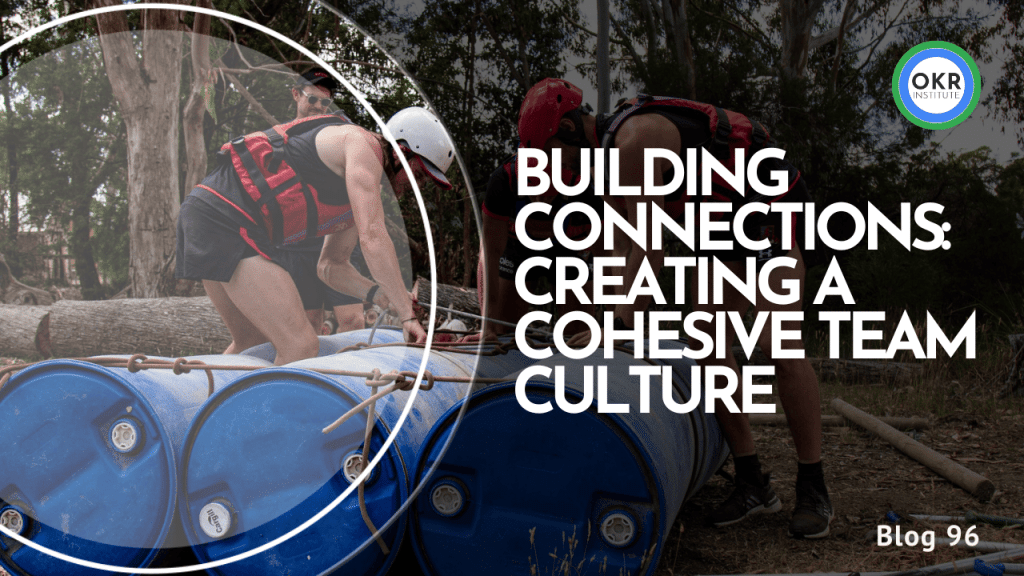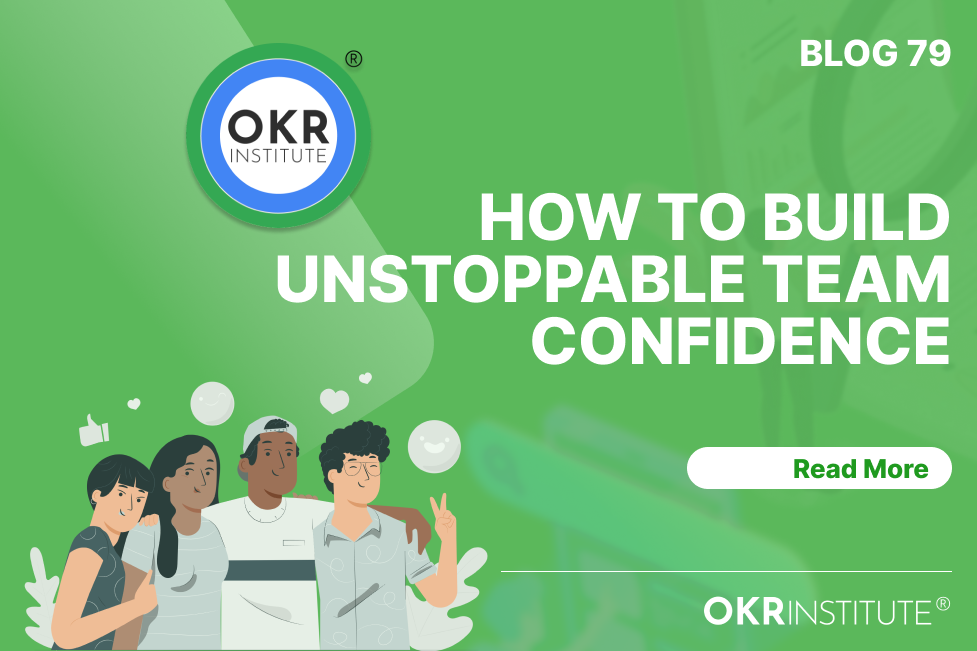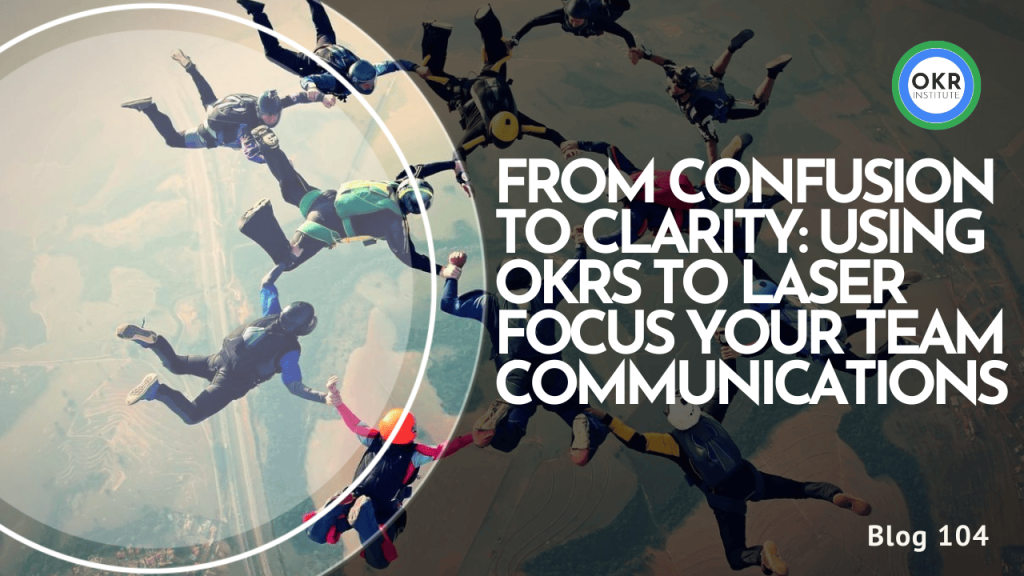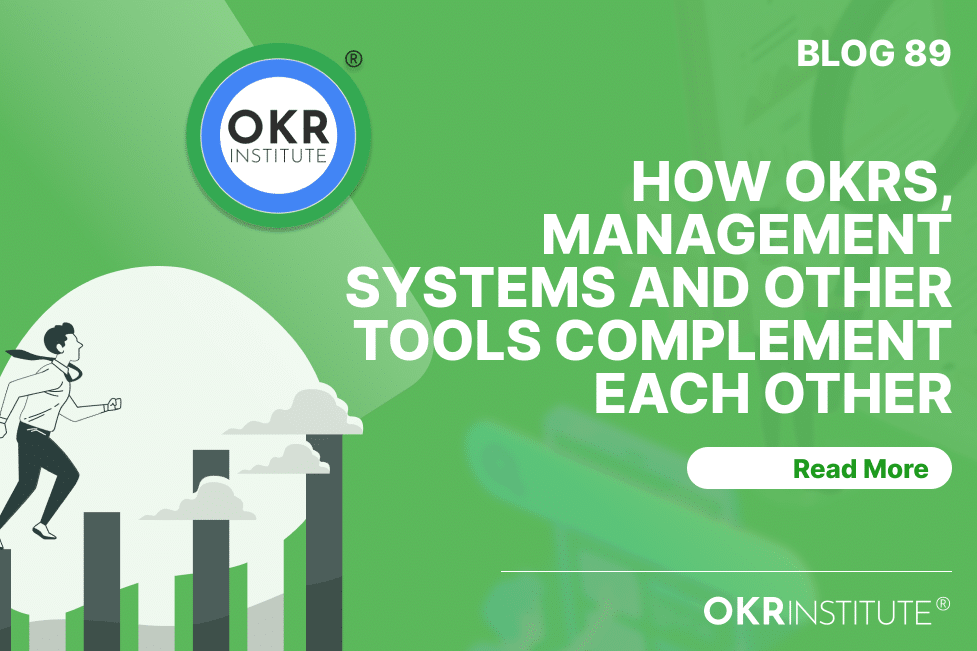Understanding Value Stream Management (VSM) and OKRs
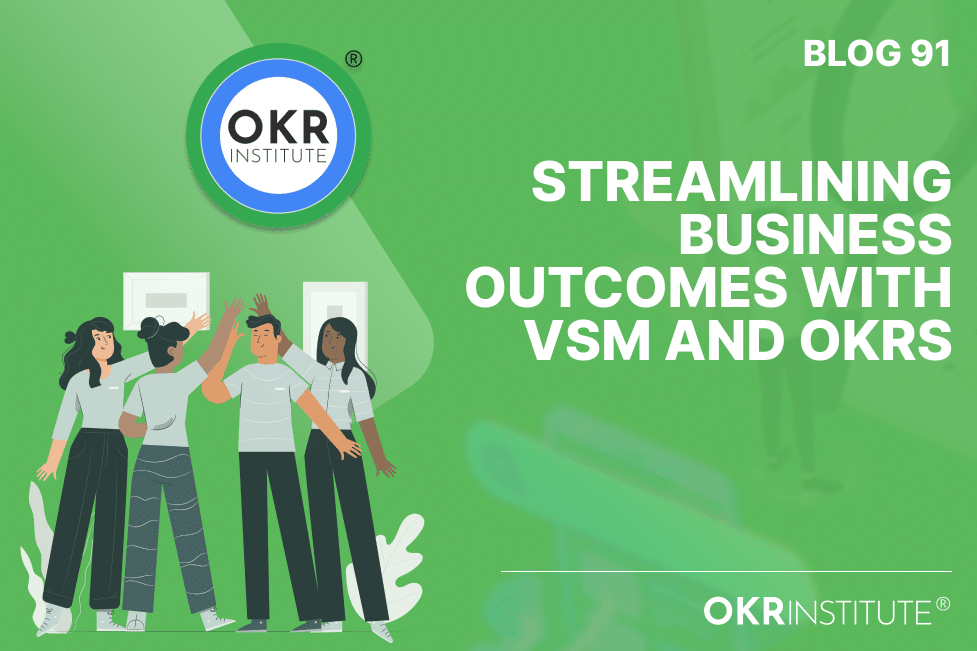
Understanding Value Stream Management (VSM) and OKRs
Value Stream Management (VSM) is a lean management approach that focuses on optimizing the end-to-end flow of value delivery to customers. It involves mapping and analyzing the various steps and processes involved in delivering a product or service, identifying bottlenecks, and implementing continuous improvement measures to streamline the value stream. The primary goal of VSM is to eliminate waste, reduce lead times, and enhance customer satisfaction.
On the other hand, Objectives and Key Results (OKRs) is a goal-setting framework that helps organizations define and track measurable objectives and their corresponding key results. OKRs provide a structured approach to setting ambitious yet achievable goals, aligning efforts across teams and individuals, and measuring progress towards those goals. The framework promotes transparency, accountability, and a focus on outcomes rather than mere outputs.
While VSM and OKRs have distinct purposes, they complement each other in several ways. VSM provides a holistic view of the value delivery process, identifying areas for improvement and enabling data-driven decision-making. OKRs, on the other hand, offer a structured way to set goals and track progress towards those improvements identified through VSM. By combining these two approaches, organizations can effectively align their strategic objectives with the optimization of their value streams, ensuring that their improvement efforts are focused on delivering tangible value to customers.
The Benefits of Combining VSM and OKRs
Combining Value Stream Management (VSM) and Objectives and Key Results (OKRs) can yield significant advantages for organizations seeking to enhance their operational efficiency, strategic alignment, and overall performance. By seamlessly integrating these two powerful frameworks, businesses can unlock a synergistic approach that fosters transparency, focus, and continuous improvement across all levels of the organization.
One of the primary benefits of this integration is improved alignment between strategic objectives and operational processes. VSM provides a comprehensive view of the end-to-end flow of value delivery, enabling organizations to identify bottlenecks, waste, and opportunities for optimization. By aligning OKRs with the value streams identified through VSM, teams can ensure that their efforts are directly contributing to the achievement of organizational goals and priorities.
Furthermore, the combination of VSM and OKRs promotes transparency and accountability throughout the organization. VSM visualizes the flow of work, making it easier to identify areas for improvement and track progress. OKRs, on the other hand, establish clear and measurable objectives, enabling teams to monitor their progress and make data-driven decisions. This transparency empowers employees at all levels to understand their role in the larger organizational context and take ownership of their contributions.
Another significant advantage of integrating VSM and OKRs is the increased focus on delivering customer value. VSM is inherently customer-centric, as it focuses on optimizing the flow of value from inception to delivery. By aligning OKRs with value streams, teams can prioritize initiatives that directly impact customer satisfaction and business outcomes, ensuring that resources are allocated effectively and efficiently.
Moreover, the combination of VSM and OKRs fosters a culture of continuous improvement and agility. VSM provides a framework for identifying and addressing inefficiencies, while OKRs enable teams to set ambitious yet achievable goals and adapt their strategies as needed. This iterative approach allows organizations to remain responsive to changing market conditions, customer needs, and emerging opportunities, driving sustained success and competitive advantage.
Aligning OKRs with Value Streams
Aligning OKRs (Objectives and Key Results) with value streams is crucial for ensuring that strategic objectives drive operational improvements and deliver tangible business value. Value streams represent the end-to-end flow of activities that create value for customers, and by mapping OKRs to these value streams, organizations can effectively translate strategic goals into actionable initiatives.
To align OKRs with value streams, organizations should follow these steps:
- Identify Key Value Streams: Start by mapping out the critical value streams within your organization. These value streams should encompass the entire process, from ideation to delivery, and span across different teams and departments.
- Define Strategic Objectives: Establish clear and measurable strategic objectives that align with your organization’s overall vision and goals. These objectives should be the driving force behind your OKRs and should reflect the desired outcomes you want to achieve.
- Map OKRs to Value Streams: Once you have identified your value streams and defined your strategic objectives, map your OKRs to the corresponding value streams. Ensure that each OKR is directly linked to a specific value stream and contributes to the improvement or optimization of that stream.
- Aligning OKRs Across Teams: Break down organizational OKRs into team-level. This aligning approach ensures that every team and team member understands how their work contributes to the overall strategic objectives and value stream improvements.
- Continuously Monitor and Adjust: Regularly monitor the progress of your OKRs and their impact on the associated value streams. Use data-driven insights and feedback loops to make necessary adjustments and optimize the alignment between OKRs and value streams.
By aligning OKRs with value streams, organizations can achieve several benefits, including:
- Improved Focus and Prioritization: OKRs tied to value streams help teams prioritize initiatives that directly contribute to strategic objectives and deliver customer value.
- Enhanced Cross-Functional Collaboration: Value streams often span multiple teams and departments, promoting cross-functional collaboration and breaking down silos.
- Increased Transparency and Accountability: Mapping OKRs to value streams provides visibility into how individual and team efforts contribute to the overall value creation process, fostering transparency and accountability.
- Continuous Improvement: By continuously monitoring the impact of OKRs on value streams, organizations can identify bottlenecks, inefficiencies, and opportunities for improvement, enabling a culture of continuous optimization.
Aligning OKRs with value streams is a powerful approach that bridges the gap between strategic planning and operational execution, ensuring that organizational efforts are focused on delivering tangible value to customers and achieving desired business outcomes.
Measuring and Tracking Progress
Combining Value Stream Management (VSM) and Objectives and Key Results (OKRs) allows organizations to effectively measure and track progress towards their strategic goals. By aligning OKRs with value streams, teams can leverage VSM metrics to quantify their progress and ensure they are delivering value to customers.
Value stream metrics, such as cycle time, lead time, and throughput, provide insights into the efficiency and effectiveness of the value delivery process. These metrics can be directly mapped to OKRs, enabling teams to measure their progress towards specific objectives. For instance, if an OKR is focused on reducing lead time for a particular product or service, the value stream metrics can provide quantitative data to track the improvement over time.
Conversely, OKRs can also inform the selection and prioritization of value stream improvements. By analyzing the gaps between current performance and OKR targets, teams can identify bottlenecks or areas of inefficiency within the value stream and prioritize improvements accordingly.
Regular monitoring and reporting of both VSM metrics and OKR progress are crucial for effective measurement and tracking. Visual management tools, such as value stream maps and OKR dashboards, can provide a clear and transparent view of progress, enabling teams to make data-driven decisions and course corrections as needed.
By combining VSM and OKRs, organizations can create a closed-loop system for continuous improvement, where value stream metrics inform OKR progress, and OKR targets drive value stream improvements. This iterative approach ensures that teams are consistently delivering value to customers while aligning their efforts with the organization’s strategic objectives.
Fostering Collaboration and Transparency
Combining Value Stream Management (VSM) and Objectives and Key Results (OKRs) can foster a culture of collaboration and transparency across the organization. VSM provides visibility into the end-to-end flow of value delivery, enabling teams to identify bottlenecks, inefficiencies, and areas for improvement. By sharing this information openly, teams can collaborate more effectively and align their efforts toward achieving common goals.
OKRs, on the other hand, promote transparency by cascading organizational objectives down to team and individual levels. This alignment ensures that everyone understands the broader context and purpose behind their work, fostering a sense of shared responsibility and ownership. By regularly reviewing and discussing OKR progress, teams can celebrate successes, address challenges, and make data-driven decisions together.
Moreover, the combination of VSM and OKRs encourages cross-functional collaboration. Value streams often span multiple teams and departments, requiring coordination and communication across boundaries. By visualizing the flow of value and aligning OKRs accordingly, teams can break down silos and work together more seamlessly toward shared objectives.
Transparency is further reinforced through regular retrospectives and feedback loops. VSM provides data-driven insights into process performance, allowing teams to identify areas for improvement and implement changes. OKRs, in turn, enable teams to track the impact of these changes and adjust their objectives and key results as needed, fostering a culture of continuous learning and improvement.
By promoting collaboration and transparency, the combination of VSM and OKRs empowers organizations to harness the collective intelligence and expertise of their workforce, driving innovation, agility, and sustained success in an ever-changing business landscape.
Overcoming Challenges and Pitfalls
Combining Value Stream Management (VSM) and Objectives and Key Results (OKRs) can be a powerful approach, but it’s not without its challenges. It’s essential to identify potential pitfalls and have strategies in place to mitigate them.
One common challenge is resistance to change. Implementing a new framework like VSM or OKRs can be met with skepticism or reluctance from team members who are comfortable with existing processes. To overcome this, it’s crucial to clearly communicate the benefits of the combined approach and involve team members in the implementation process. Provide training and support to help them understand the value and gain buy-in.
Another potential pitfall is a lack of alignment between VSM and OKRs. If the value streams and OKRs are not properly aligned, it can lead to conflicting priorities and inefficiencies. To avoid this, ensure that OKRs are directly tied to the value streams and that there is a clear line of sight between the two. Regular communication and collaboration between teams responsible for VSM and OKRs are essential.
Maintaining focus and avoiding scope creep can also be a challenge. As new opportunities or initiatives arise, there may be a temptation to add them to existing value streams or OKRs, leading to overload and dilution of efforts. Establish a clear prioritization process and regularly review and adjust value streams and OKRs to ensure they remain relevant and achievable.
Finally, data quality and accuracy can be a potential pitfall. Both VSM and OKRs rely heavily on data to measure progress and make informed decisions. Ensure that you have robust data collection and analysis processes in place, and regularly validate the data’s accuracy and reliability.
By proactively identifying and addressing these challenges, organizations can successfully combine VSM and OKRs, driving continuous improvement, alignment, and better business outcomes.
Case Studies and Success Stories
Acme Corporation
Acme Corporation, a leading software company, struggled with aligning their teams and optimizing their software delivery process. By implementing Value Stream Management (VSM) and Objectives and Key Results (OKRs), they were able to gain visibility into their end-to-end value streams and align their teams around shared goals.
The company identified their critical value streams, such as customer onboarding and feature delivery, and defined OKRs for each stream. These OKRs were cascaded down to the team level, ensuring that everyone was working towards the same objectives. Through VSM, they could measure and track the flow of work through their value streams, identifying bottlenecks and areas for improvement.
By combining VSM and OKRs, Acme Corporation was able to reduce their cycle time by 40%, improve customer satisfaction scores by 25%, and increase their overall productivity by 30%. The transparency and alignment provided by this approach fostered a culture of continuous improvement and enabled them to deliver value to their customers more efficiently.
GlobalTech Solutions
GlobalTech Solutions, a multinational IT services provider, faced challenges in coordinating their distributed teams and ensuring consistent delivery across their global operations. They adopted VSM and OKRs to streamline their processes and align their teams around common goals.
The company defined their core value streams, such as incident resolution and service delivery, and established OKRs for each stream. These OKRs were communicated to all teams, ensuring that everyone understood the company’s priorities and how their work contributed to the overall objectives.
Through VSM, GlobalTech Solutions could visualize the flow of work across their value streams and identify areas for improvement. They implemented tools and practices to measure and track their progress, enabling data-driven decision-making and continuous improvement.
By combining VSM and OKRs, GlobalTech Solutions was able to reduce their mean time to resolution by 30%, increase customer satisfaction scores by 20%, and improve their overall operational efficiency by 25%. The transparency and alignment fostered by this approach enabled them to deliver consistent and high-quality services to their global customers, while empowering their teams to continuously improve their processes.
Getting Started with VSM and OKRs
To effectively combine Value Stream Management (VSM) and Objectives and Key Results (OKRs), organizations should follow a structured approach. Here’s a step-by-step guide to help you get started:
- Define Your Value Streams: Start by identifying and mapping out your organization’s key value streams. These are the end-to-end processes that deliver value to your customers. Involve cross-functional teams to ensure a comprehensive understanding of the value streams.
- Establish Strategic Objectives: Determine your organization’s strategic objectives and priorities. OKRs should align with these overarching goals and provide a clear direction for your teams.
- Set OKRs for Value Streams: For each value stream, define specific OKRs that support your strategic objectives. These OKRs should focus on improving the flow of value, reducing waste, and enhancing customer satisfaction.
- Identify Metrics and Measure Baselines: Determine the key metrics that will be used to measure the performance of your value streams and the progress towards your OKRs. Establish baselines for these metrics to track improvements over time.
- Implement VSM Practices: Adopt VSM practices such as value stream mapping, continuous improvement cycles (e.g., Kaizen events), and lean principles to optimize your value streams. Ensure that these practices are aligned with your OKRs and support the achievement of your objectives.
- Foster Collaboration and Transparency: Encourage cross-functional collaboration and transparency throughout the organization. Regularly share progress updates, celebrate successes, and address challenges together. This will help maintain alignment and foster a culture of continuous improvement.
- Review and Adjust: Regularly review the performance of your value streams and the progress towards your OKRs. Adjust your strategies, tactics, and priorities as needed. Embrace an iterative approach and be willing to adapt based on feedback and learnings.
- Provide Training and Support: Ensure that all teams involved in the VSM and OKR initiatives receive proper training and support. Provide resources, guidance, and coaching to help them understand and effectively implement the combined approach.
- Celebrate Successes and Learn from Failures: Recognize and celebrate achievements, both big and small. At the same time, embrace failures as learning opportunities and use them to improve your processes and strategies.
- Continuously Improve: Treat the integration of VSM and OKRs as an ongoing journey of continuous improvement. Regularly review and refine your approach, seeking ways to enhance collaboration, streamline processes, and drive better outcomes for your organization and customers.
By following these steps, organizations can effectively combine Value Stream Management and OKRs, fostering alignment, transparency, and a culture of continuous improvement focused on delivering value to customers.
Continuous Improvement and Adaptation
Combining Value Stream Management (VSM) and Objectives and Key Results (OKRs) is not a one-time effort but an ongoing journey of continuous improvement and adaptation. As organizations evolve, market conditions change, and new challenges arise, it’s crucial to regularly review and refine the integration of these two powerful methodologies.
Continuous improvement is a core principle of both VSM and OKRs. VSM emphasizes the identification and elimination of waste, while OKRs encourage a growth mindset and the pursuit of ambitious goals. By regularly revisiting and refining the alignment between value streams and OKRs, organizations can ensure that they remain agile and responsive to changing circumstances.
Adaptation is equally important when combining VSM and OKRs. As new insights emerge from the data gathered through VSM and the progress tracked against OKRs, organizations should be prepared to adjust their strategies, processes, and objectives accordingly. This iterative approach allows for course corrections and enables organizations to stay on track toward achieving their desired outcomes.
Regular retrospectives and feedback loops are essential for continuous improvement and adaptation. By involving cross-functional teams and stakeholders, organizations can gather diverse perspectives, identify areas for improvement, and make informed decisions about how to refine their approach to combining VSM and OKRs.
Additionally, fostering a culture of learning and experimentation is crucial. Encouraging teams to try new approaches, experiment with different techniques, and learn from both successes and failures can lead to valuable insights and improvements in the integration of VSM and OKRs.
By embracing continuous improvement and adaptation, organizations can ensure that the combination of VSM and OKRs remains effective and relevant, enabling them to navigate changing landscapes, seize new opportunities, and achieve sustained success.
The Future of VSM and OKRs
The integration of Value Stream Management (VSM) and Objectives and Key Results (OKRs) is a powerful combination that is poised to shape the future of organizational performance and agility. As businesses continue to navigate an ever-changing landscape, the need for streamlined processes, clear objectives, and data-driven decision-making will become increasingly crucial.
One potential future development is the emergence of more sophisticated tools and platforms that seamlessly integrate VSM and OKRs. These platforms could provide real-time visibility into value streams, allowing organizations to quickly identify bottlenecks, optimize workflows, and align OKRs accordingly. Additionally, advanced analytics and machine learning capabilities could be leveraged to identify patterns, predict outcomes, and suggest data-driven recommendations for continuous improvement.
Another trend that may gain traction is the adoption of VSM and OKRs across various industries and sectors. While these methodologies have traditionally been associated with software development and technology companies, their benefits are applicable to any organization seeking to improve efficiency, alignment, and customer value delivery. Industries such as healthcare, finance, and manufacturing could benefit greatly from the principles of VSM and OKRs, leading to increased adoption and cross-industry knowledge sharing.
Furthermore, the integration of VSM and OKRs could foster a culture of continuous learning and experimentation. By regularly reviewing and adapting value streams and OKRs, organizations can embrace a mindset of continuous improvement, encouraging employees to identify opportunities for innovation and optimization. This culture of learning and experimentation could lead to breakthroughs in process optimization, product development, and customer experience.
As the world becomes increasingly interconnected and complex, the need for cross-functional collaboration and alignment will continue to grow. The combination of VSM and OKRs provides a framework for breaking down silos, fostering transparency, and aligning teams around shared objectives and value streams. This could lead to more effective cross-functional collaboration, enabling organizations to tackle complex challenges and deliver value more efficiently.
Ultimately, the future of VSM and OKRs lies in their ability to adapt and evolve alongside the ever-changing business landscape. As new technologies emerge and customer expectations shift, the integration of these methodologies will need to remain flexible and responsive. By embracing a mindset of continuous improvement and leveraging data-driven insights, organizations can stay ahead of the curve and thrive in an increasingly competitive and dynamic environment.
CEO of the OKR Institute
Related Courses
Recent Posts
Tags
#OKR
#Value Stream Management
#VSM



